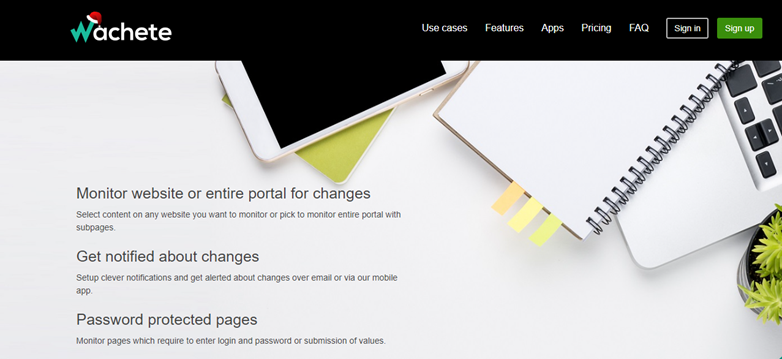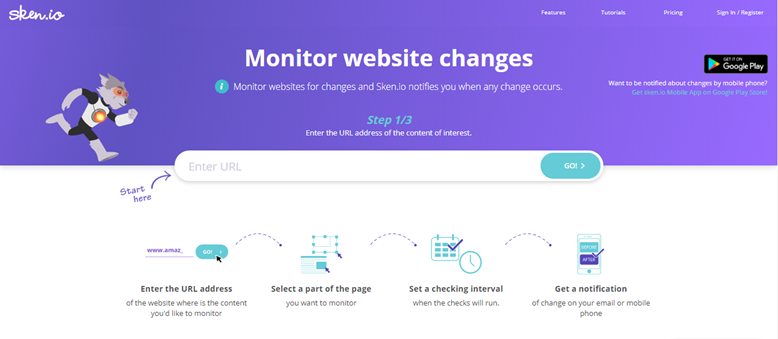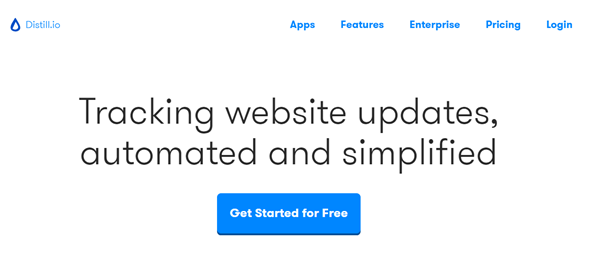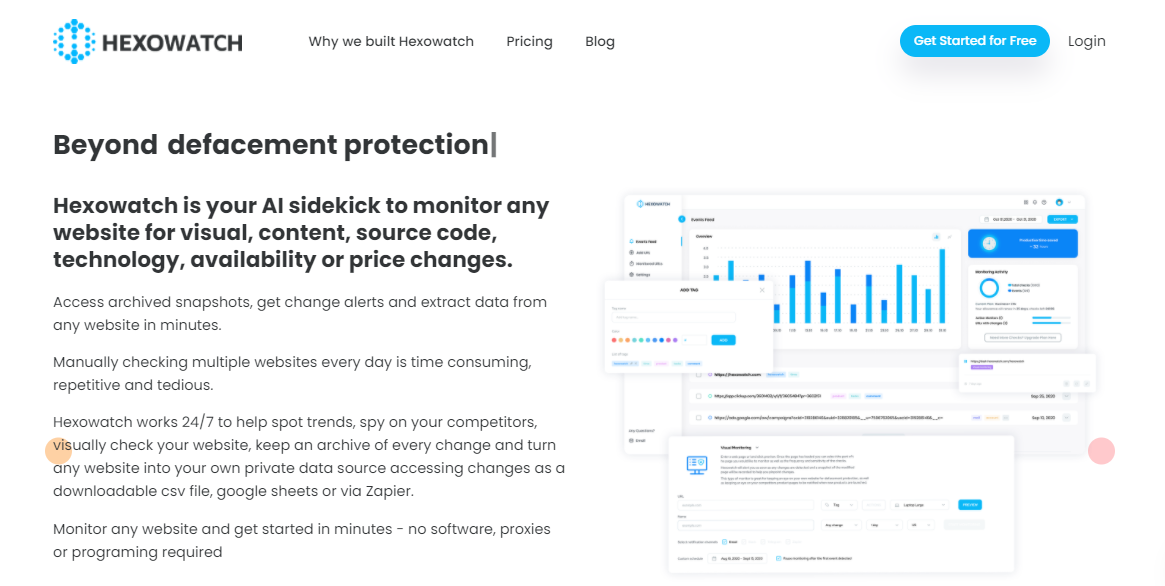Table of Contents
You are probably aware that having an overall good website is necessary. This includes quality web design, responsiveness, fast loading times, language support, adequate privacy policy, and many other little things that are extremely important in assuring your site works well. Luckily, there are tools that help you keep track of any issues that can happen over time. These tools have been designed to help monitor your sites, detect any possible changes, and fix them.
1. Hexowatch
Hexowatch is a tool designed for e-commerce business owners, marketing agencies, and UI designers. You can even see it as a partner that will give you updates on competitors by checking their websites for price changes, content, keywords, and even visuals.
You get nine different options for monitoring. Each option can be selected from an easy to understand interface and a short description. To start the process, add the URL and select what you wish to track. These options include HTML elements (such as price changes or product availability), keywords, technology, content, visuals, domain (such as changes in ownership), and automatic AI monitoring that gives you notifications when any changes are detected.
You can even decide which type of screen you would like to check these updates. There are 7 device sizes to choose from for the visual monitor. This tool can be integrated with email, Slack, Telegram, Google Sheets, and Zapier.
There are 3 pricing plans: $98 for 4500 checks per month, $196 for 10000 checks per month, and $294 for 25000 checks per month.
2. Wachete

Wachete is a tool that can monitor website content, password-protected pages, and dynamic JavaScript pages. You can monitor specific parts of a site or sub-pages and get summary notifications over email or via its mobile app. The changes are collected for up to 6 months and you can create an RSS feed from content on any page.
The data can be downloaded as an Excel sheet, PDF, MS Word, and many other file types.
In the free version, you can monitor up to 5 pages with checks every 24 hours. For $4.90, you can monitor 50 pages every 60 minutes and you get 1 dynamic page check. If you need more, for $9.90 you can monitor 100 pages every 10 minutes and get 2 dynamic page checks. The most expensive plan is $299 for 3000 pages every 5 minutes and you get 60 dynamic pages.
3. Sken.io

Sken.io is a website monitoring tool that lets you monitor specific parts of a website or gives you the option to select and track multiple parts on a page. You can schedule when you wish to monitor these sites with a time scheduler and select page elements or areas to monitor. You can choose to receive email notifications or push notifications via the mobile app.
This tool comes with a Chrome extension for easier tracking. The data is stored on a cloud so you can access it from anywhere, your phone or browser. You can also delete an element that’s hiding or blocking your content.
You’ll be paying €3 for 500 checks per month, €12 for 3,000 checks, and €45 for 15,000 checks per month.
4. Pagescreen

Pagescreen is a tool that keeps track of every small and significant change happening on the website you wish to monitor. You can get these notifications via email, Slack, or Webhook. There is also a 14-day free trial if you wish to test the app before buying it.
You can access the history of the pages you are monitoring and/or take screenshots of them. There’s even an option that allows you to group your monitors by domain. You can also bundle them together into collections for easier navigation. Grouping your team members is also a great help as it enables everyone to get notified of the changes on the sites you monitor.
You can get this tool for €14.90 per month with unlimited URLs and 1,000 captures. In case your needs are simply greater than that, there is a plan for €49.90 with 5,000 captures, or for €179.90 per month with 20,000 captures.
5. Distill.io

Distill.io is the final website monitoring tool we will review today. With this tool, you can monitor websites locally or on the cloud. You can even select which items to track visually. These changes are trackable from any browser and you can get updates on any device. The data can be exported in CSV or JSON files, as well as PDFs. You can receive the notifications via email, mobile app, or SMS.
There’s an option to track with single or compound conditions as well as choose specific website parts you wish to monitor. The changes are run on clouds or on local monitors. The tool can be accessed with extensions for different browsers (Chrome, Firefox, Opera) or a mobile app, and it comes with the ability to integrate with Slack and Discord.
There is a free plan you can use for up to 25 monitors every 6 hours. If that’s simply not enough for you, there is a $12 per month plan for 50 monitors, a $28 per month plan for 150 monitors, and an $80 per month plan for 500 monitors or more.
Conclusion
So, we’ve reviewed the top 5 tools for website monitoring. As you can see, these tools can come in quite handy as you don’t have to spend your time and energy trying to see what the new changes are (which can happen all the time, especially if you are in the e-commerce or retail business).
Finally, we would recommend you use Hexowatch. It’s a tool that comes with a lot of variety and different features that help you monitor website changes.


